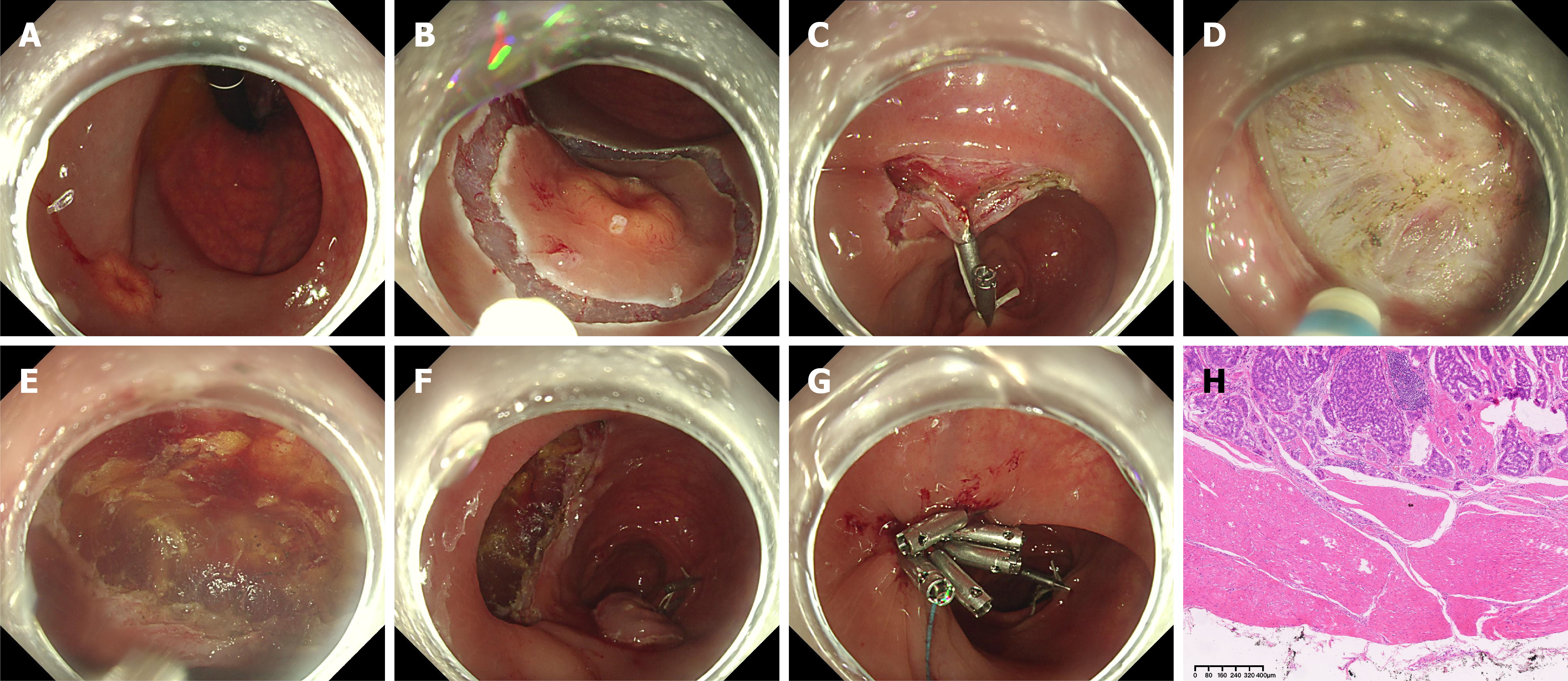Copyright
©The Author(s) 2025.
World J Gastroenterol. May 21, 2025; 31(19): 106814
Published online May 21, 2025. doi: 10.3748/wjg.v31.i19.106814
Published online May 21, 2025. doi: 10.3748/wjg.v31.i19.106814
Figure 3 Endoscopic full-thickness dissection in a 15-mm rectal neuroendocrine tumor.
A: The lesion from case 3 (Figure 1E and F) was treated with endoscopic full-thickness dissection. Preprocedural positron emission tomography/computed tomography ruled out metastasis, and endoscopic ultrasound confirmed the involvement of the muscularis propria (MP). The lesion showed poor lifting with submucosal injection, indicating involvement of MP; B and C: After circumferential incision, traction was applied with clips and a loop; D: During dissection, the circular muscle was attempted for removing. However, extensive fibrosis made it impossible to preserve the outer longitudinal muscle, likely due to tumor invasion into MP; E and F: The entire rectal muscular wall was removed; G: Clips with a detachable snare were used to close the defect; H: Histological analysis revealed a complete structure of MP and a negative vertical margin, classified as pT2Nx. The patient opted to follow-up instead of additional radical surgery.
- Citation: Liu JN, Chen H, Fang N. Current status of endoscopic resection for small rectal neuroendocrine tumors. World J Gastroenterol 2025; 31(19): 106814
- URL: https://www.wjgnet.com/1007-9327/full/v31/i19/106814.htm
- DOI: https://dx.doi.org/10.3748/wjg.v31.i19.106814









